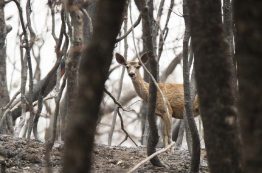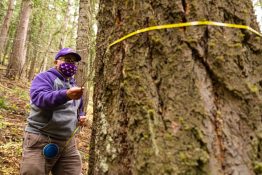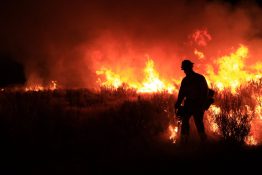When a massive wildfire tears through a landscape, what happens to the animals? While many animals have adapted to live with wildfires of the past — which were smaller, more frequent and kept ecosystems in balance across the West — it’s unclear to scientists how animals are coping with today’s unprecedented megafires. More than a century of fire suppression coupled with climate change has produced wildfires that are now bigger and more severe than before.
Read more at UW News »Glowing fish teeth answer questions about tooth replacement rates
One of the facts of life for humans is the replacement of baby teeth with permanent adult teeth. Whether pulled out prematurely, wiggled loose by eager hands or naturally falling out unexpectedly, this occasion marks an important milestone in the maturation process that is shared amongst all vertebrates in some form. Imagine, though, losing and replacing a tooth every single day.
Read more »Environmental research in “Español”: Hispanic champions in environmental sciences
In recent years, environmental challenges, like climate change, have become a critical focus point of scientists worldwide. Researchers work tirelessly to ask and examine questions that deal with the very future of our world. Taking a closer look, we find that some of the voices answering those questions have a particular essence. Hispanic scientists have taken up the challenge to push forward environmental research to address the issues that ultimately threaten the delicate balance and even the survival of our planet’s ecosystems.
Read more »Bigleaf maple decline tied to hotter, drier summers in Washington
As its name suggests, the bigleaf maple tree’s massive leaves are perhaps its most distinctive quality. A native to the Pacific Northwest’s wet westside forests, these towering trees can grow leaves up to 1.5 feet across — the largest of any maple. But since 2011, scientists, concerned hikers and residents have observed more stressed and dying bigleaf maples across urban and suburban neighborhoods as well as in forested areas.
Read more at UW News »Dryer, warmer night air is making some Western wildfires more active at night
Firefighters have reported that Western wildfires are starting earlier in the morning and dying down later at night, hampering their ability to recover and regroup before the next day’s flareup. A study by University of Washington and U.S. Forest Service scientists shows why: The drying power of nighttime air over much of the Western U.S. has increased dramatically in the past 40 years.
Read more at UW News »





